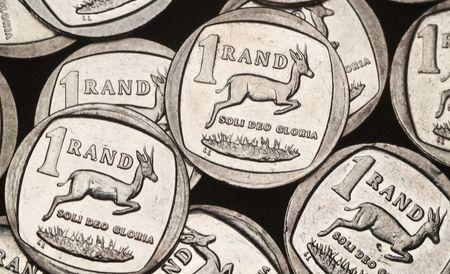By Promit Mukherjee and Nelson Banya
JOHANNESBURG (Reuters) – South Africa’s two biggest gold miners Sibanye Stillwater Ltd and Harmony Gold Ltd operate many of their mines in the Witwatersrand basin near Johannesburg.
They pay the same tariffs for electricity, which, after labour, is the standout expense at 20% of the costs at both companies.
The wage bills diverge. They are on course to account for 53% of Harmony’s costs and represent 49% of the outlay at Sibanye, where two unions have served a notice of strike action from March 9.
WHAT ARE THE UNIONS DEMANDING?
Negotiating as a bloc with Sibanye, four unions – the Association of Mineworkers and Construction Union (AMCU), the National Union of Mineworkers (NUM), Solidarity and United Association of South Africa (UASA) – have demanded a 1000 rand ($65.37) increase per month each year for the next three years.
Sibanye has called this wage increase unsustainable for its gold operations, saying it would inflate its wage bill to 2.5 billion rand in total by July 2023.
Solidarity last week agreed to Sibanye’s final offer made to the unions on Feb. 4. Two of the unions – AMCU and NUM – rejected it and have served a notice to strike from March 9. UASA has also backed strike action but has yet to serve notice.
WHAT HAS HARMONY OFFERED WORKERS?
In September, Harmony concluded a three-year wage agreement ending June 2024 with major unions, covering 98% of its employees. This is likely to increase its wage bill to 53% of its total cash operating cost, its annual report says.
Under the agreement, the company will pay a wage increase of 1,000 rand per month for each year of the agreement for its category 4 to 8 employees, which include entry level, unskilled and semi-skilled employees.
Higher category employees, such as miners, artisans and officials, will receive a wage increase of 6% of their basic wage for each year of the agreement.
In addition, Harmony will give a housing allowance of 2,750 rand in the first year and further increases each year up to a maximum value of 3,240 rand in the third year.
Employees not eligible for the housing allowance will receive a living-out allowance of R2,500 in year 1, which will increase by 100 rand in year 2 and in year 3 respectively, Harmony said in September.
WHAT IS SIBANYE’S OFFER?
Sibanye on Feb. 4 offered its category 4–8 employees an increase of 800 rand per month for each of the three years, including a 100 rand per month increase in allowances. Its miners, artisans and officials would receive an increase of 5% each year.
This is the company’s sixth amended offer since negotiations began, and it has led to a stalemate. The company’s wage bill stands at 49% of total cost of production.
WHY DO HARMONY AND SIBANYE DIFFER IN THEIR OFFER?
Sibanye told Reuters that Harmony’s higher offer to unions chooses stability in operations over long-term sustainability. Harmony has said the life of mine of its gold assets and rising gold prices can help it recoup the wage cost escalation.
Sibanye’s three biggest gold mines have a life of between five and 13 years, while Harmony’s three biggest mines have a life of eight to 24 years.
Some of Harmony’s surface-level mines, where production costs are lower, have a mine life of more than 14 years. This gives Harmony more scope to reduce overall costs.
Harmony’s South African mines have gold reserves of 24.7 million ounces, while Sibanye’s have reserves of 13.1 million ounces.
Harmony produces 36.16 ounces per employee compared with 28.83 ounces per Sibanye employee as a result of Harmony having fewer deep underground mines. The grades both companies produce are comparable.
Industrial action in South Africa would have a bigger impact on Harmony as more than 90% of production and over 80% of its operating profit comes from its gold operations in the country.
Sibanye’s South Africa gold operations contributed only 7.5% of adjusted annual earnings before interest, tax, depreciation and amortisation (EBITDA – a measure of operating profit) in 2021.
($1 = 15.2987 rand)
(Reporting by Promit Mukherjee and Nelson Banya; Editing by Helen Reid and Barbara Lewis)











